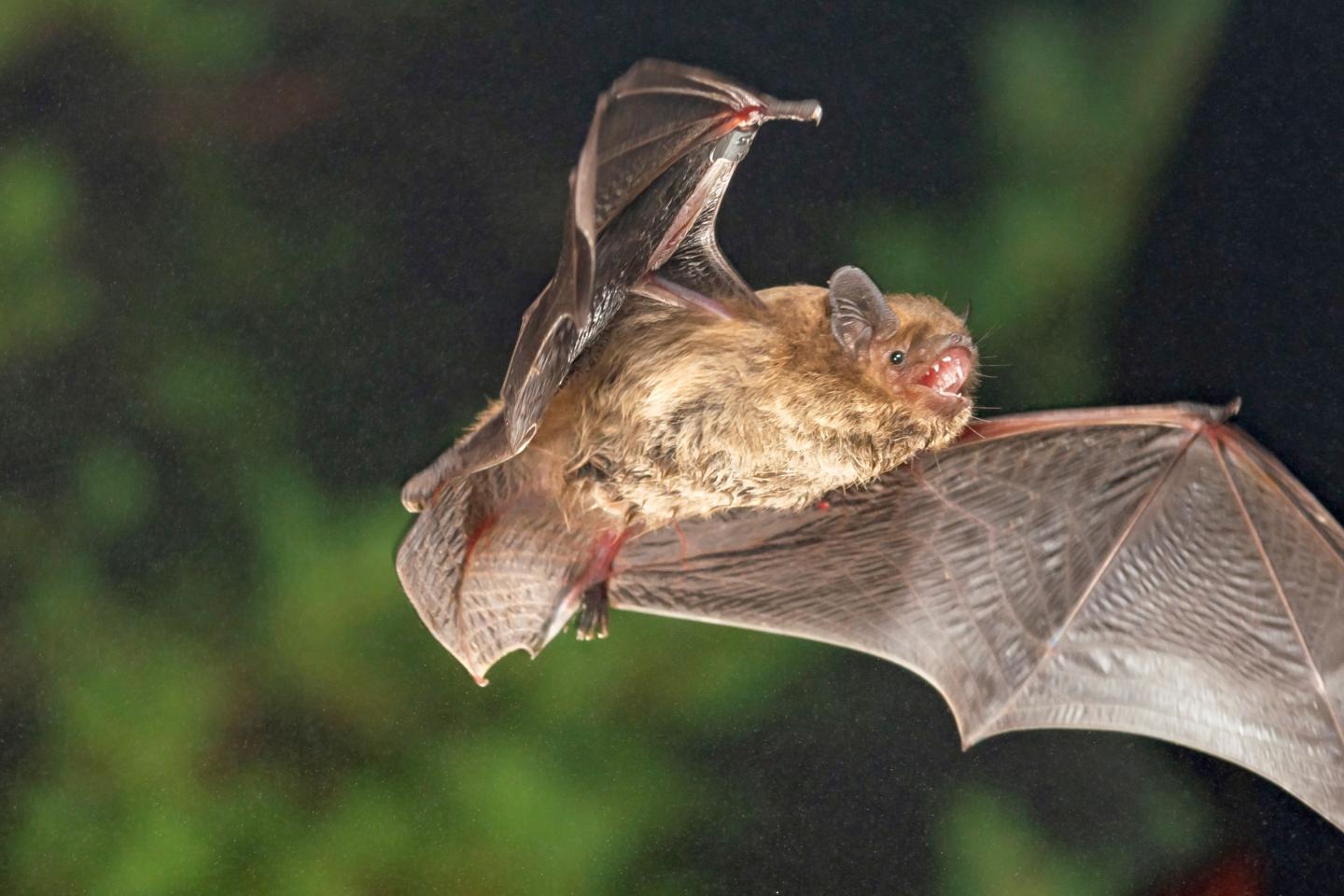
Credit: Christian Giese
Whether it is bats, wildebeest or whales, millions of mammals move over thousands of kilometres each year. How they navigate during migration remains remarkably understudied compared to birds or sea turtles, however. A team of scientists led by the Leibniz-IZW in Berlin now combined a mirror experiment simulating a different direction of the setting sun and a new test procedure to measure orientation behaviour in bats to understand the role of the sun’s position in the animals’ navigation system. The results demonstrate for the first time that a migratory mammal species uses the sunset direction to calibrate their compass system. Furthermore the experiment, which is published in Current Biology, indicates that this capacity is not inherited and first-time migrating young bats need to learn the importance of the solar disc at dusk for nightly orientation.
The experiment that scientists Oliver Lindecke and Christian Voigt from the Leibniz Institute for Zoo and Wildlife Research (Leibniz-IZW) designed and conducted together with colleagues from Latvia and the United Kingdom was based on two steps: First, several Soprano pipistrelle bats (Pipistrellus pygmaeus) were randomly assigned into two groups. At nightfall during their migration period, one group could watch the natural sunset at the Latvian Baltic Sea shore. The other group however watched the sun going down via a large mirror which was reversing the direction of the natural sunset exactly 180°. For the latter animals, the real sunset was blocked from vision by the taped sidewall of their holding cages. Later at night, animals of both groups were transported inland, away from the beach of the Baltic Sea, for the second step of the experiment: On a forest meadow, one bat after the other got released remotely from a specially designed circular release box. By the help of this box, the very direction an animal took when it left it, could be recorded. Prior studies showed that take-off orientations could be used as a proxy for departure flight orientation in these bats.
“The new orientation assay, the circular release box for bats, ruled out any visual influence at takeoff and allowed us to compare the directions bats of both groups where taking”, explains Lindecke. “The results show two fundamental aspects in bat navigation: Firstly, the setting sun’s direction plays a crucial role because there is a significant difference in the bats’ orientation with the group which experienced the mirrored sunset departing in opposite direction compared to the control group. And secondly, only adult bats showed directional preferences”, Lindecke summarizes the results. “Subadults displayed random orientation in both groups, which suggests to us that young bats need to learn long-distance navigation during migration from older conspecifics”, concludes Christian Voigt, senior author and head of the Department of Evolutionary Ecology at the Leibniz-IZW. How this learning process works and which social factors and practices contribute to it remains unknown and needs further investigation.
Mammals remain remarkably understudied with regard to navigation during migration. One of the reasons I a lack of experimental assays that measure a correlate of migratory orientation such as those that exist in birds and sea turtles. The larger migratory mammals, for example wildebeest or whales, are challenging to handle for any experimental work. Bats could fill this void as they have emerged as an important study model in movement ecology. They combine high ecophysiological diversity with a variety of movement behaviours. Bat eyes evolved to sense a wide range of light and a broad spectrum of wavelengths. Presumably, insectivorous bats rely heavily on vision like fruitbats when orienting over long distances since echolocation and path integration are ineffective and error-prone at distances larger than a few dozen meters. The results of this study are the first empirical evidence for the specific cues and mechanisms a migratory mammal uses for navigation.
###
Media Contact
Christian C. Voigt
[email protected]




